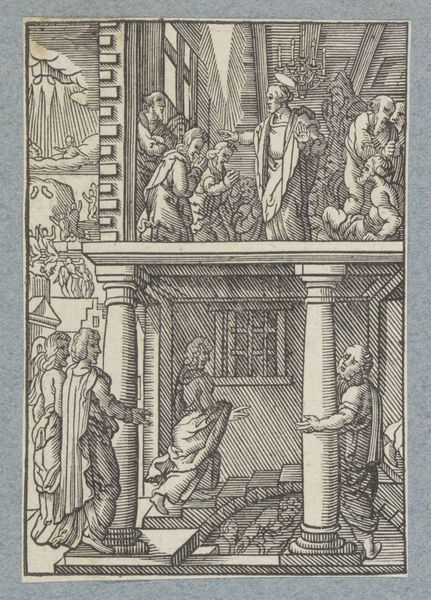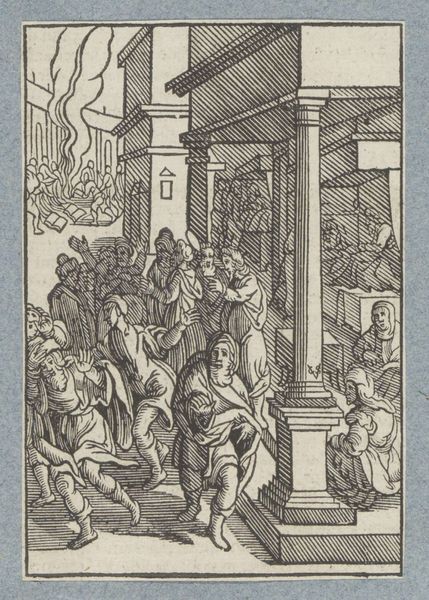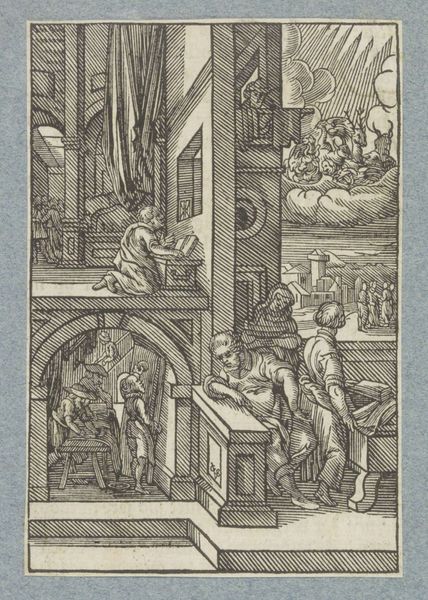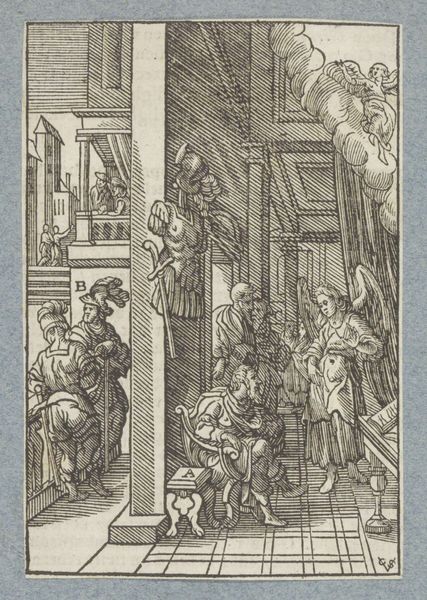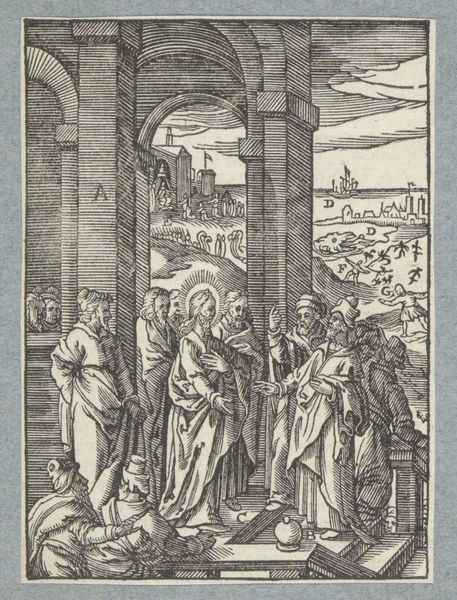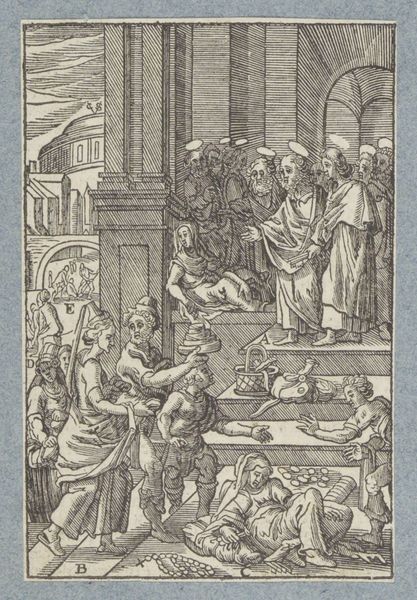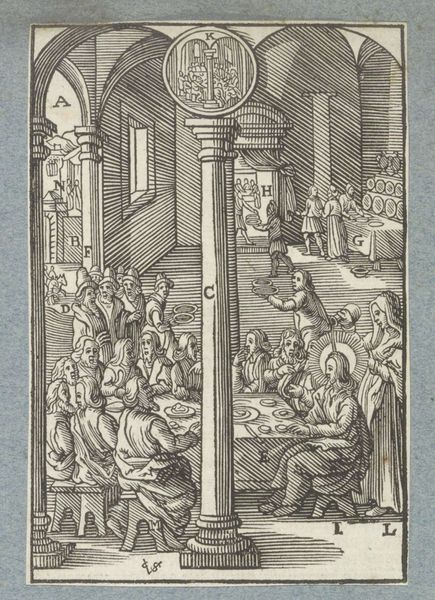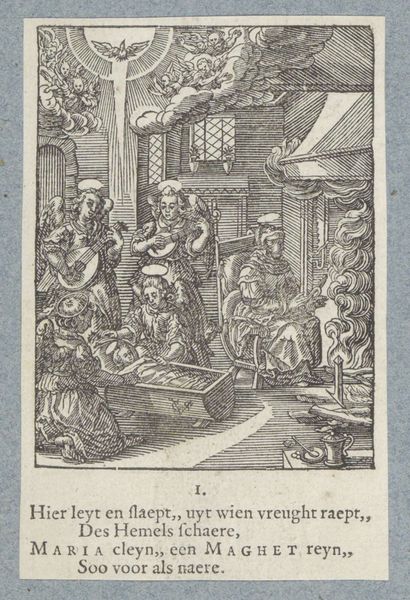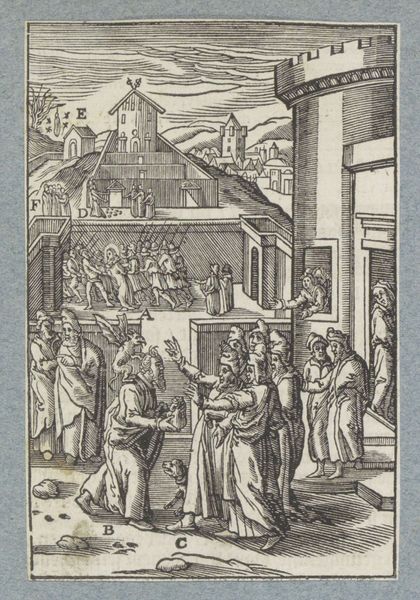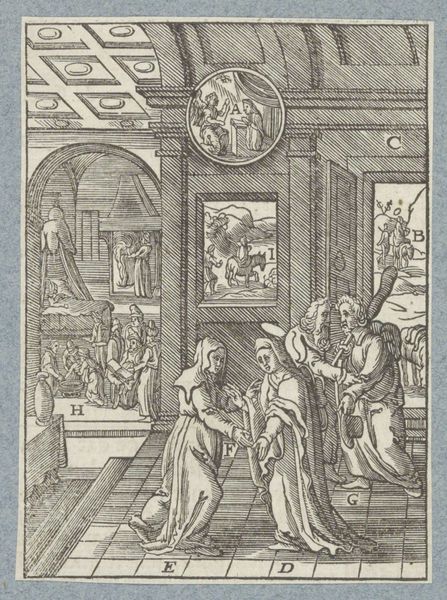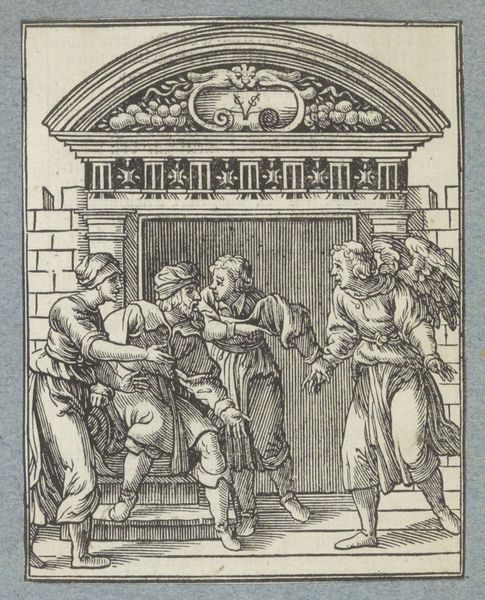
print, engraving
#
narrative-art
#
baroque
# print
#
figuration
#
engraving
Dimensions: height 112 mm, width 75 mm
Copyright: Rijks Museum: Open Domain
Curator: This engraving, titled "The Raising of Tabitha," dates to before 1646, and it's attributed to Christoffel van Sichem II. It's currently held here at the Rijksmuseum. Editor: There's an incredible intensity, isn't there? All the figures seem crammed together, expressing this chaotic mix of grief and...hope? It makes the miracle being depicted feel very immediate. Curator: Indeed. Van Sichem captures a very specific biblical episode from the Acts of the Apostles, where Saint Peter raises Tabitha, also known as Dorcas, from the dead. It’s not just a resurrection; it’s a demonstration of divine power through human agency. Look closely at the halo above Peter, a symbol representing sainthood in many visual traditions. Editor: Right, and thinking about it through a socio-political lens, Tabitha herself is important. She was known for her good works and charity. The text says, “She was always doing good and helping the poor.” Her revival becomes a powerful endorsement of her position, reinforcing her significance within her community. Curator: Exactly. Consider also the symbolic weight of the garments some women show Peter: they are clothes Dorcas made herself to clothe the widows and the poor of her town. Here, in the upper space, clothing has become more than just protection. It carries her values, and memories of her compassion. Even today in different cultures, textiles can evoke ancestral figures or act as protective totems. Editor: I'd never thought about the clothes quite like that! The piece as a whole presents interesting power dynamics between men and women and classes of people, but I'm curious...what emotional residue do you think this print leaves with its audience today? Curator: I think we can all find threads to relate to, between loss, communal ties and hope. Editor: Ultimately it speaks to an age-old story about communities being built on acts of goodwill, offering resilience in hard times and calling back for those who pass away.
Comments
No comments
Be the first to comment and join the conversation on the ultimate creative platform.
